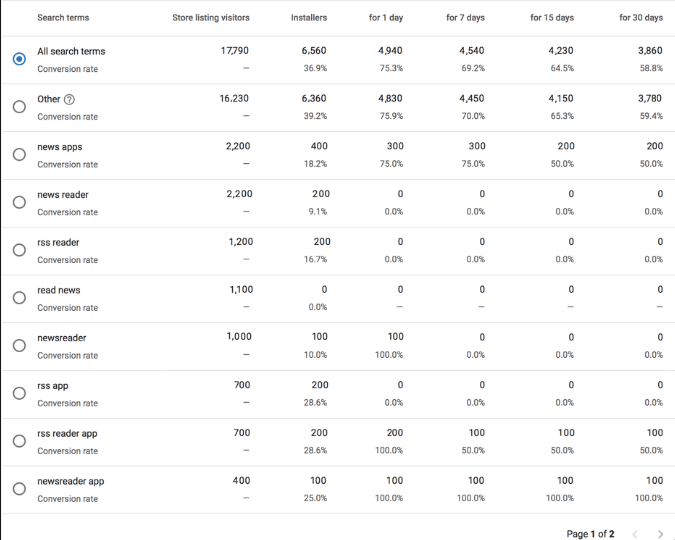Google Play Update
The new organic searched data was recently unveiled by Google on Google Play Console and was immediately called the #ASO Earthquake. The news of the release was first announced in October 2017, but the event still managed to surprise many of the industry’s professionals. Some were skeptical about the new data, but, without a doubt, the news has had a big impact on the community. The #ASO Earthquake data now allows developers to separate the search and browse organic data while looking at the statistics, as well as access the data about the installs per keyword
SEARCH AND BROWSE ORGANIC PLAY STORE DATA
Apple did it first with App Store, allowing developers to view search and browse data separately. It means that App Store developers, and now Google Play developers, can get a fuller picture of the source of installations through the users who have installed the app. The new detailed data is a big improvement over the package of data that was previously accessible for the developers and included visitors, installers, buyers, and repeat buyers.
Now the developers can see two separate columns of installers. In the first column they will see the installers who installed the app by entering a keyword into the search and following the search results. In the second column developers will see the installers who came from a Play Store browsing session or from looking at a store category, featured apps, or suggested apps. The first column is named by Google as “Unique users who found your app via Play Store Search”, and the second is called “Unique users who found your app via browsing the Play Store”.
While there is no doubt that the new improved data will be very useful to developers who want to know their audience better, there is one big drawback. The data isn’t separated by country, which means the location of the installers will not be as easy to access and work with as you’d want.
One of the biggest questions that arises from Google’s reveal is whether all data displayed there will be organic. The truth is that Google Play’s paid installs have a somewhat obscure mechanism, which means it won’t be easy to differentiate between the sources of installs and some part of the installs may very well turn out to be paid instead of organic.

INSTALLS PER KEYWORD: UP TO 1000 KEYWORDS CAN BE RESEARCHED
Another big change to the Google Play data is the data specifying installs per each keyword. Keywords have always been a big part of ASO, and clients of app marketers are always anxious to know how many of the installs came from which keywords. In the past there were tools for finding that out, but they were far from perfect and often offered data that wasn’t clear enough.
If you open the Google Play Console, you will see that for every app Google now allows to see data on 1000 keywords. The data includes the conversion rate, the visitors of the listing, the installers, buyers, and return buyers. The data is neatly organized in the console, but, again, there is a major drawback - the information cannot be broken down by country.
The Google Play Console now displays data starting from October 2017. The mechanisms for collecting data are constantly improving, which means soon the information will be even more precise and complete.
The new data offered by Google has the potential to significantly changed the ASO market as we know it. With means to access the sources of installation in great detail, marketers will be able to further optimize their campaigns and make them more efficient. However, the data will also likely stimulate competition between developers and marketers to build more installs and purchases through the most popular keywords.